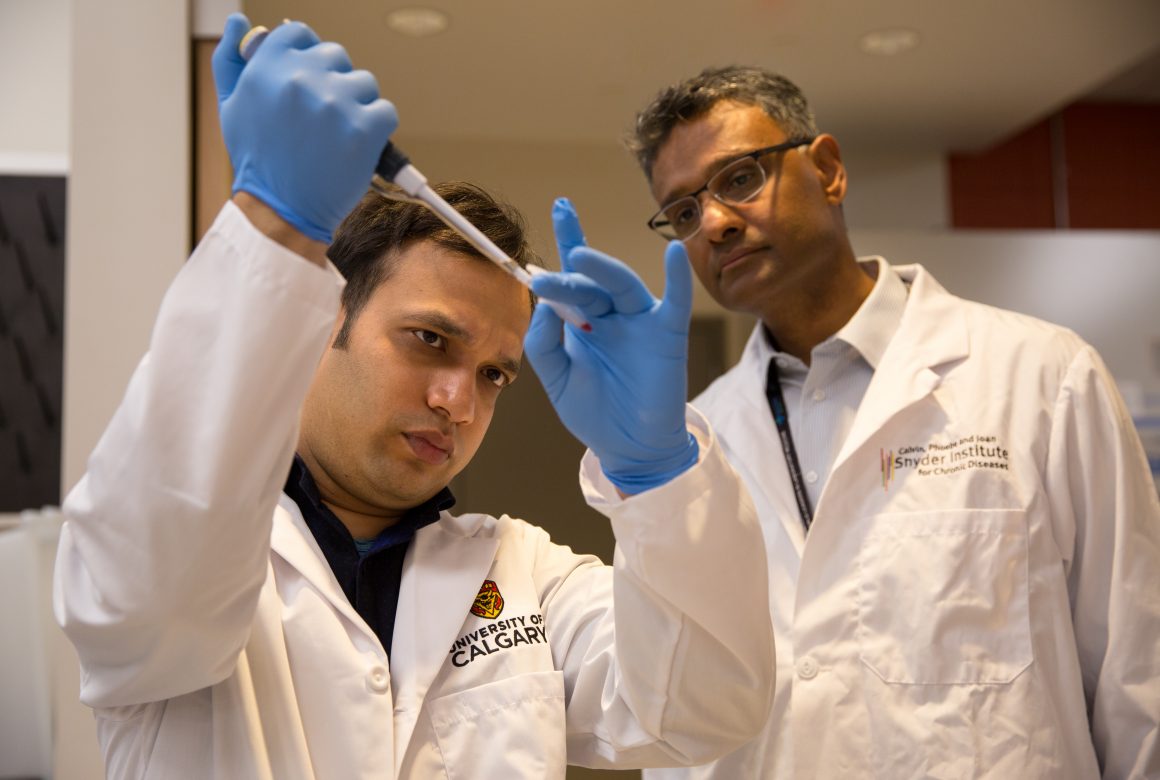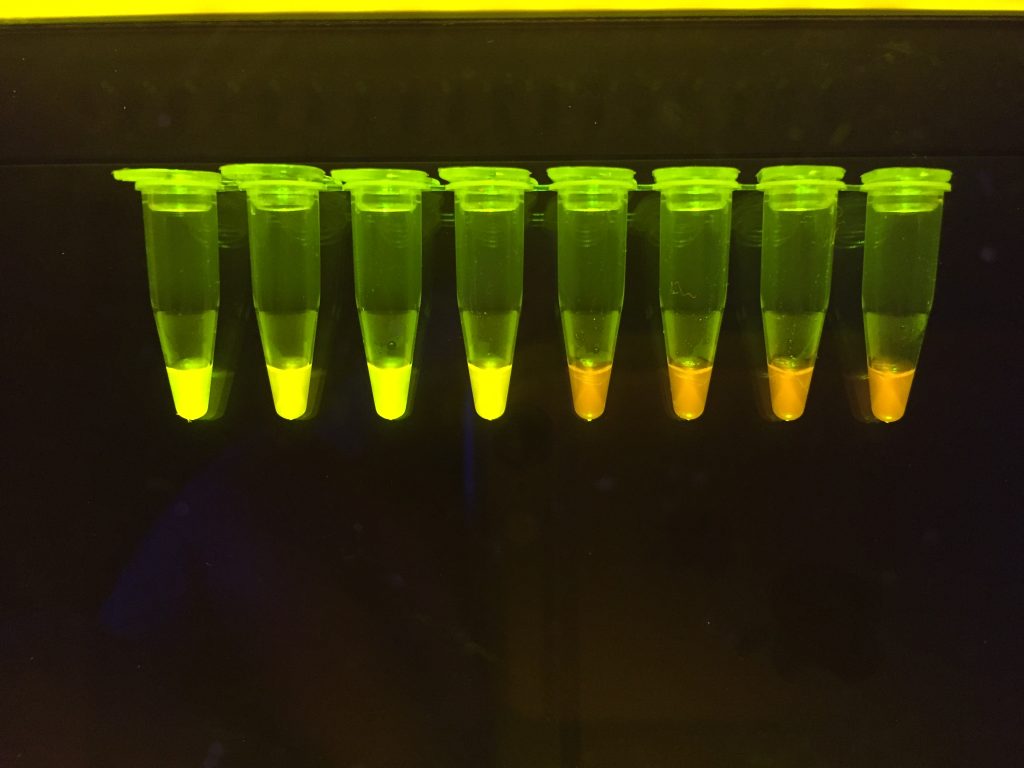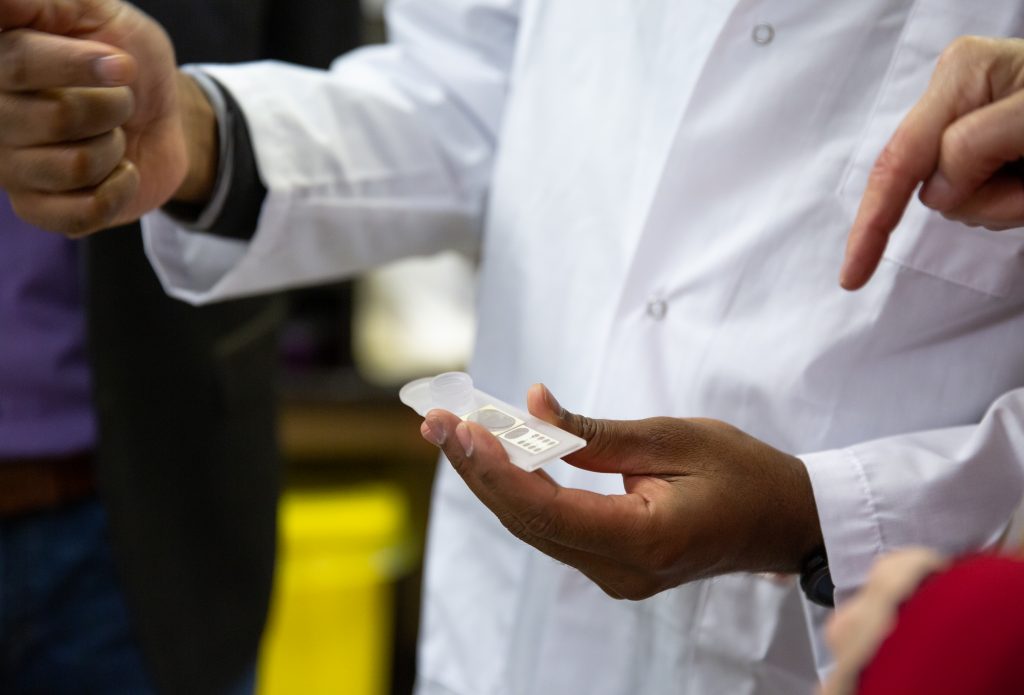
UCalgary hand-held COVID test looks to end of year completion
By Nikayla Goddard, May 20 2020 —
Thanks to work by a University of Calgary Cumming School of Medicine Research team, accessible handheld testing devices for COVID-19 and other similar viruses may be developed by January 2021 and able to provide results in 30 minutes.
The current detection method involves extracting the genetic material from a sample, often a throat or nasal swab, and amplifies specifically the genetic material of the virus to see if it’s present. The new method that Dylan Pillai’s team is looking at operates in the same manner, but uses different chemicals and has the opportunity to provide more accessibility and faster results.
Dr. Dylan Pillai, professor and clinical-researcher and member of the Snyder Institute for Chronic Diseases and the Alberta Children’s Hospital Research Institute at the Cumming School of Medicine (CSM), is the lead of the study that was funded in early March by the Canadian Institutes of Health Research and Genome Canada.
With the funding came the study’s two main objectives, which Pillai explained are to develop a “point of care tool” to detect COVID-19 and to conduct metagenomic sequencing, which looks at infected samples and sequencing the genetic material of everything in the sample to try and understand not just the virus, but any other bacteria or viruses accompanying it to understand the “community of microbes” in that COVID-19 sample.

With part of their first objective, the team was recently able to show that a method called loop mediated amplification (LAMP) was able to detect the virus in samples.
“This is useful because LAMP is different from methods that are being currently used,” Pillai said. “That’s helpful in some ways because there’s a lot of pressure to source the existing chemicals and reagents for the test, so here we present an alternative approach.”
With this alternative set of chemicals and reagents available, the team is now ultimately looking to deploy this chemistry into the form of a handheld cartridge that goes beyond the lab. The development of the cartridge technology will be the project’s focus over the rest of the year.
While the cartridges may be considered late in light of Canada’s peak COVID-19 curve, it doesn’t mean that the technology is wasted.
“There may be a second wave that comes next year,” Pillai offered. “There may be some use in a test later on for people going back to work.”

“And this is just one pandemic virus,” he continued. “There will eventually be other respiratory illnesses that link to viruses and by developing this platform we can actually get ourselves closer to being better prepared for next time. We have this long-term vision as well. I don’t think all is lost if we don’t match the current peak, but there may still be value. And […] we are not just interested in the pandemic virus, but also other diseases — I think there will still be benefits.”
Pillai offered insight into his research team’s hopes in his closing words.
“COVID-19 had a huge impact, obviously, globally. It’s affected every aspect of society. With every crisis like this there is an opportunity to contribute and make a difference. My group is very interested in […] trying to, in a meaningful way, contribute to this area of diagnostics and hopefully we can do that.”
